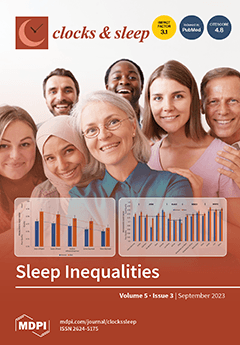Increasing evidence suggests a correlation between changes in the composition of gut microbiota and sleep-related phenotypes. However, it remains uncertain whether these associations indicate a causal relationship. The genome-wide association study summary statistics data of gut microbiota (
n = 18,340) was downloaded from the MiBioGen consortium and the data of sleep-related phenotypes were derived from the UK Biobank, the Medical Research Council-Integrative Epidemiology Unit, Jones SE, the FinnGen consortium. To test and estimate the causal effect of gut microbiota on sleep traits, a two-sample Mendelian randomization (MR) approach using multiple methods was conducted. A series of sensitive analyses, such as horizontal pleiotropy analysis, heterogeneity test, MR Steiger directionality test and “leave-one-out” analysis as well as reverse MR analysis, were conducted to assess the robustness of MR results. The genus
Anaerofilum has a negative causal effect on getting up in the morning (odd ratio = 0.977, 95% confidence interval: 0.965–0.988,
p = 7.28 × 10
−5). A higher abundance of order Enterobacteriales and family Enterobacteriaceae contributed to becoming an “evening person”. Six and two taxa were causally associated with longer and shorter sleep duration, respectively. Specifically, two SCFA-produced genera including
Lachnospiraceae UCG004 (odd ratio = 1.029, 95% confidence interval = 1.012–1.046,
p = 6.11 × 10
−4) and
Odoribacter contribute to extending sleep duration. Two obesity-related genera such as
Ruminococcus torques (odd ratio = 1.024, 95% confidence interval: 1.011–1.036,
p = 1.74 × 10
−4) and
Senegalimassilia were found to be increased and decreased risk of snoring, respectively. In addition, we found two risk taxa of insomnia such as the order Selenomonadales and one of its classes called Negativicutes. All of the sensitive analysis and reverse MR analysis results indicated that our MR results were robust. Our study revealed the causal effect of gut microbiota on sleep and identified causal risk and protective taxa for chronotype, sleep duration, snoring and insomnia, which has the potential to provide new perspectives for future mechanistic and clinical investigations of microbiota-mediated sleep abnormal patterns and provide clues for developing potential microbiota-based intervention strategies for sleep-related conditions.
Full article






